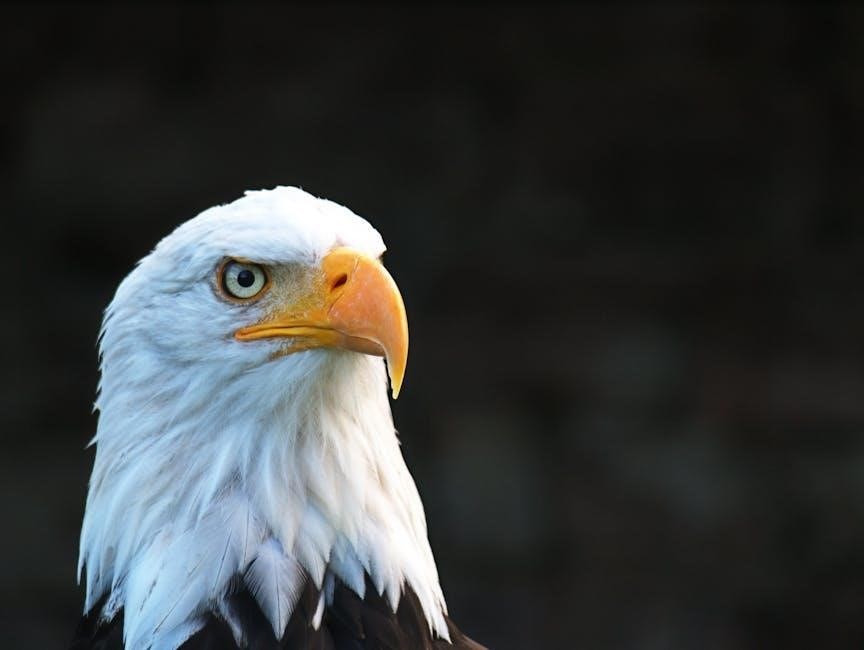
Hunter Node 100 Manual: A Comprehensive Guide
This comprehensive guide provides users with essential information on the Hunter Node 100 controller. It covers everything from initial setup and programming to troubleshooting and maintenance. You will find all the information you need here.
Welcome to the world of efficient and user-friendly irrigation with the Hunter Node 100 controller! This battery-operated marvel brings convenience and reliability to your watering schedule. Designed for both residential and light commercial applications, the Node 100 eliminates the need for AC power, offering unparalleled flexibility in installation.
With its simple programming interface, setting up your irrigation system is now easier than ever. The Node 100 offers standard Hunter controller programming, including three independent programs (A, B, and C), each with four start times. This allows for customized watering schedules to meet the specific needs of your landscape. Its wireless capability ensures hassle-free operation and monitoring, making irrigation management a breeze. Whether you’re a seasoned professional or a first-time user, the Hunter Node 100 is your go-to solution for smart and sustainable watering.

Overview of Features and Benefits
The Hunter Node 100 boasts battery operation, wireless capabilities, and standard Hunter programming. Enjoy easy installation, flexible scheduling, and reliable performance for optimal irrigation management and water conservation.
Battery Operation and Wireless Capability
The Hunter Node 100’s battery operation offers unparalleled flexibility, eliminating the need for AC power. This feature simplifies installation in remote locations or areas without readily available electrical outlets. Its wireless capability (where applicable, depending on the specific model or add-ons) further enhances convenience by allowing remote monitoring and control.
This combination ensures efficient irrigation management, especially in challenging environments. Enjoy freedom from cords and electrical constraints, making the Node 100 a practical solution for gardens, landscapes, and agricultural settings. The long-lasting battery life minimizes maintenance and ensures continuous operation throughout the watering season.
This contributes to sustainable water use and reduces environmental impact. Moreover, wireless connectivity enables real-time adjustments based on weather conditions and plant needs, optimizing water distribution. The Hunter Node 100 redefines irrigation convenience and efficiency;
Standard Hunter Programming
The Hunter Node 100 incorporates standard Hunter controller programming, offering three independent programs (A, B, and C). Each program provides exceptional flexibility, allowing users to tailor irrigation schedules to meet specific plant needs. Each program allows for the setting of four start times per program. This feature is consistent with other Hunter controllers, ensuring a familiar user experience.
Standard Hunter programming simplifies the setup process, making it easy for both novice and experienced users to create customized watering schedules. This helps to optimize water usage and promote healthy plant growth. The intuitive interface allows for quick adjustments, adapting to changing seasonal conditions or specific plant requirements.
This ensures efficient water management and prevents over or under-watering. The Hunter Node 100’s integration of standard Hunter programming principles makes it a user-friendly and effective solution for all your irrigation needs.

Installation Instructions
Proper installation is crucial for optimal performance. This section provides step-by-step instructions for mounting the controller, wiring connections, and rain sensor installation, ensuring a seamless setup process for your Hunter Node 100.
Mounting the Controller
The Hunter Node 100 controller is designed for easy installation in various outdoor environments. Begin by selecting a suitable location that is protected from direct sunlight and extreme weather conditions. Ensure the chosen spot allows for convenient access to wiring connections and battery replacement. The controller can be mounted to a wall, fence post, or directly to a valve box using appropriate hardware, such as screws or zip ties.
Before mounting, consider the proximity to the water source and sprinkler system components. Ensure the mounting surface is stable and can support the weight of the controller. Use the provided mounting template (if available) to mark the screw locations accurately. Drill pilot holes as needed, and securely fasten the controller to the mounting surface. Verify that the controller is level and properly aligned for optimal performance and ease of access. Proper mounting is essential for the longevity and reliability of the Hunter Node 100.
Wiring Connections: Solenoids and Sensors
Connecting the Hunter Node 100 to your sprinkler system’s solenoids requires careful attention to detail. Ensure the power is off before making any wiring connections. The Node 100 operates DC latching solenoids, typically requiring 9-11 VDC. Identify the common wire and the individual zone wires from your solenoids. Connect the common wire to the designated “COM” terminal on the controller. Then, connect each zone wire to its corresponding numbered terminal (1, 2, 3, etc.) on the Node 100.
For rain sensors, the Node 100 includes dedicated sensor inputs. Wire the rain sensor according to the manufacturer’s instructions, connecting the sensor wires to the designated sensor terminals on the controller. Secure all wire connections with waterproof connectors to prevent corrosion and ensure reliable operation. Proper wiring is crucial for the correct functioning of your sprinkler system and prevents potential damage to the controller. Double-check all connections before restoring power to the system.
Rain Sensor Installation and Wiring (up to 100ft)
The Hunter Node 100 controller supports rain sensor integration, enhancing water conservation efforts. You can mount the rain sensor up to 100 feet (30 meters) away from the Node controller, provided you use appropriate wiring. A minimum wire size of 18 AWG/1 mm is recommended to ensure reliable signal transmission over this distance. Choose a location for the rain sensor that is open and exposed to rainfall, away from obstructions like trees or eaves that might affect its accuracy.
Secure the sensor to a post or wall using appropriate mounting hardware. Run the sensor wires back to the Node 100 controller. Connect the sensor wires to the designated sensor terminals on the controller, following the wiring diagram provided in the Hunter Node 100 manual. Ensure the wire connections are waterproof to prevent corrosion and maintain a stable connection. With proper installation, the rain sensor will automatically suspend irrigation during rainfall.

Programming the Hunter Node 100
Programming the Hunter Node 100 involves setting up watering schedules. This includes configuring programs (A, B, C), start times, and manually operating stations. Effective programming ensures efficient irrigation.
Setting Programs (A, B, C)
The Hunter Node 100 allows for customized irrigation through three independent programs: A, B, and C. Each program can control different zones or cater to varying plant needs. To set up a program, access the programming menu on the controller. Select the desired program (A, B, or C) and configure the watering days. You can choose specific days of the week or set intervals for watering.
Consider factors such as plant type, sun exposure, and soil conditions when determining the appropriate watering schedule for each program. Program A might be used for lawns, Program B for flower beds, and Program C for vegetable gardens, each with unique watering requirements. This flexibility ensures optimal water usage. By utilizing these three programs effectively, you can maintain a healthy and thriving landscape while conserving water. Remember to regularly review and adjust the programs as needed.
Setting Start Times (4 per program)
The Hunter Node 100 offers exceptional flexibility by allowing you to set up to four start times for each of its three programs (A, B, and C). This feature is crucial for tailoring irrigation to specific plant needs and optimizing water usage throughout the day. To configure start times, navigate to the program you wish to adjust (A, B, or C) within the controller’s programming menu.
Each start time represents a point in the day when the program will begin its watering cycle. Staggering start times can prevent water runoff and improve absorption by allowing the soil to gradually soak up moisture. For example, you might set a start time for early morning to take advantage of cooler temperatures and reduced evaporation, and another for late afternoon to provide additional hydration before nightfall. This advanced control ensures efficient and effective irrigation.
Manual Operation of Sprinkler Stations
The Hunter Node 100 allows for manual operation of individual sprinkler stations, providing immediate control when needed. This is useful for testing sprinkler heads, spot watering, or addressing specific dry areas in your landscape without running an entire programmed cycle. To manually activate a station, access the manual operation mode on the controller.
You can typically do this by pressing and holding a specific button, often indicated by an arrow or a “manual” label. Once in manual mode, you can select the desired station to activate. The controller will then run that station for a predetermined duration, which can usually be adjusted within the settings. This on-demand functionality offers convenience and precision for managing your irrigation system, ensuring that your landscape receives the attention it needs precisely when it needs it.

Troubleshooting

Having issues with your Hunter Node 100? This section offers solutions to common problems. It includes LED indicator meanings, battery replacement, and how to address typical operational issues for smooth functionality.
LED Indicator Meanings
Understanding the LED indicators on your Hunter Node 100 is crucial for diagnosing potential issues. A flashing green light usually indicates normal operation and sufficient battery life. Conversely, a red or amber light often signals low battery power or a system fault that requires immediate attention. Check the battery immediately!
A rapidly blinking LED might suggest a wiring problem with the solenoids or a communication error within the system. If the LED remains constantly lit without flashing, this could point to a different type of internal malfunction needing further investigation.
Refer to the comprehensive manual to accurately interpret specific flashing patterns, enabling quick identification and resolution of problems, ensuring consistent and effective irrigation system performance. Always consult the full manual for detailed explanations of each LED code.
Battery Replacement Procedures
Replacing the battery in your Hunter Node 100 controller is a straightforward process that ensures uninterrupted operation. First, ensure the controller is turned off to prevent any accidental activation during the replacement. Carefully unscrew the rear body of the controller from the front half, taking care not to allow water to enter the battery compartment.
Remove the old 9-volt battery and correctly insert a new, high-quality alkaline battery. Ensure the battery is properly seated and the polarity is correct to avoid damaging the device. Once the new battery is installed, securely reattach the rear body to the front half, making sure the seal is tight to prevent water intrusion.
Test the controller to verify that it powers on and operates normally. Regular battery replacement, typically once a year, is recommended to maintain optimal performance.
Addressing Common Issues
When using the Hunter Node 100, several common issues may arise, and understanding how to address them can save time and frustration. One frequent problem is the controller not powering on, which is often due to a depleted or improperly installed battery; ensure the battery is fresh and correctly oriented. Another issue is stations failing to activate; check the solenoid wiring and ensure the connections are secure and free from corrosion.
If the controller displays error codes, consult the manual for specific meanings and troubleshooting steps. Rain sensor malfunctions can also prevent irrigation; verify the sensor is correctly wired and functioning properly. Inconsistent watering schedules may result from incorrect programming, so double-check the start times and run times.

Technical Specifications
The Hunter Node 100 operates using DC latching solenoids. It has a wide operating temperature range and is powered by a standard 9-volt battery. Wired sensor inputs are also part of its specifications.
Electrical Specifications (DC Latching Solenoids)
The Hunter Node 100 irrigation controller is specifically designed to operate with DC latching solenoids, ensuring efficient and reliable performance in the field. The controller requires a 9-11 VDC power supply for proper solenoid operation. This voltage range is critical for the solenoids to function correctly, opening and closing the valves to control water flow to the sprinkler stations. Using solenoids outside this voltage range can lead to malfunction or damage to the controller and the solenoids themselves.
The electrical design of the Node 100 prioritizes low power consumption to maximize battery life, a key feature for battery-operated controllers. The controller’s circuitry is optimized to minimize energy use during both active operation and standby mode. Accurate wiring is essential when connecting the solenoids to the Node 100. Ensure that the wires are securely fastened and properly insulated to prevent short circuits or other electrical issues. Furthermore, regular inspection of the wiring and solenoids is recommended to maintain optimal system performance and prevent costly repairs.

Operating Temperature Range
The Hunter Node 100 controller is engineered to perform reliably within a specific operating temperature range, typically from 0°F to 140°F (-18°C to 60°C). This range ensures that the controller’s internal components, including the electronic circuitry and battery, function optimally under varying environmental conditions. Exceeding these temperature limits can negatively impact the controller’s performance, potentially leading to inaccurate timing, reduced battery life, or even permanent damage.
In extremely cold environments, the battery’s capacity may decrease, resulting in shorter run times or failure to operate. Conversely, high temperatures can cause the electronic components to overheat, leading to malfunctions or premature failure. To mitigate these risks, it is advisable to shield the Node 100 controller from direct sunlight or extreme weather conditions, especially in regions with harsh climates. Consider installing the controller in a protected enclosure or shaded area to maintain a stable operating temperature and prolong its lifespan. Regular monitoring of the controller’s performance can also help identify potential temperature-related issues early on.
Power Source (9-Volt Battery)
The Hunter Node 100 controller relies on a standard 9-volt battery as its primary power source, providing a convenient and reliable solution for irrigation control in locations without access to mains electricity. The battery powers the controller’s electronic components, including the timer, solenoid activation circuits, and display, ensuring autonomous operation. The expected battery life can vary depending on usage patterns, such as the frequency and duration of watering cycles, as well as environmental factors like temperature. Regular monitoring of the battery’s charge level is crucial to prevent unexpected interruptions to the irrigation schedule.
When the battery is low, the controller typically displays a warning indicator, signaling the need for replacement. It is recommended to use a high-quality alkaline battery to maximize performance and longevity. During battery replacement, ensure that the controller is turned off to prevent any electrical surges or damage. Proper installation of the battery, with correct polarity, is essential for the controller to function correctly. In colder climates, consider using lithium batteries, which offer better performance and longer life compared to alkaline batteries at low temperatures.

Maintenance and Care
Proper maintenance ensures longevity. Protect the Node 100 from water. Regularly inspect the battery compartment. Follow general maintenance tips for optimal performance and to avoid issues.
Protecting from Water Intrusion
Safeguarding your Hunter Node 100 controller from water intrusion is paramount for ensuring its reliable operation and extending its lifespan. Water damage can lead to corrosion, short circuits, and ultimately, controller failure, resulting in irrigation system malfunctions. Therefore, implementing proactive measures to shield the Node 100 from moisture is essential.
First and foremost, ensure that the controller’s housing is tightly sealed. Inspect the seals and gaskets regularly for any signs of wear or damage, and replace them as needed. When installing the Node 100, choose a location that offers natural protection from rain and splashing, such as under an eave or within a weatherproof enclosure. Avoid placing the controller in areas prone to flooding or standing water.
Furthermore, when making wiring connections, use waterproof connectors to prevent moisture from seeping into the electrical components. Consider applying a sealant or dielectric grease to the connections for added protection. Regularly inspect the surrounding area for any potential sources of water intrusion, such as leaky pipes or drainage issues, and address them promptly. By diligently following these preventative measures, you can effectively protect your Hunter Node 100 controller from water damage.
General Maintenance Tips
To ensure the longevity and optimal performance of your Hunter Node 100 controller, regular maintenance is crucial. Proper upkeep will prevent minor issues from escalating into costly repairs or replacements; Here are some general maintenance tips to keep your Node 100 in top condition.
Regularly inspect the controller for any signs of physical damage, such as cracks, dents, or loose components. Clean the exterior of the controller with a soft, damp cloth to remove dirt and debris. Avoid using harsh chemicals or abrasive cleaners, as they can damage the finish. Check the wiring connections for corrosion or loose connections, and tighten or replace them as needed.
Periodically test the controller’s functionality by running a manual cycle and verifying that all zones are operating correctly. Monitor the battery life and replace the battery as recommended in the manual; Keep the area around the controller free from obstructions, such as vegetation or debris, to ensure proper ventilation. By following these simple maintenance tips, you can extend the lifespan of your Hunter Node 100.

Manual Download Information
To download the Hunter Node 100 manual in PDF format, please see the following section. This section provides links to easily find the manual you need for reference.
Where to Find the Hunter Node 100 Manual PDF
Finding the Hunter Node 100 manual PDF is crucial for proper installation, programming, and maintenance. You can usually locate the manual on the official Hunter Industries website. Navigate to the “Support” or “Downloads” section and search for “Node 100 manual.” Alternatively, try searching directly on the Hunter Industries website using the model number “Node 100.”
Many online retailers that sell the Hunter Node 100 also provide a link to the manual on their product pages. Check websites like Amazon, Home Depot, or specialized irrigation supply stores. You might also find it by doing a web search for “Hunter Node 100 manual PDF download.” Always ensure you download the manual from a trusted source to avoid potentially harmful files.
If you still have trouble locating the manual, consider contacting Hunter Industries customer support directly. They can provide you with a direct link or email you a copy of the PDF manual.
